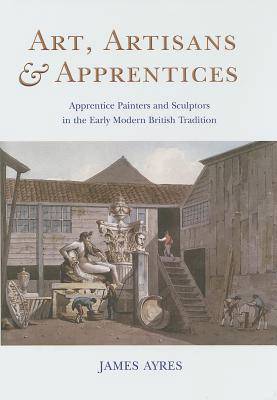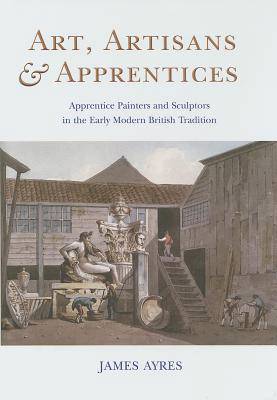
- Afhalen na 1 uur in een winkel met voorraad
- Gratis thuislevering in België vanaf € 30
- Ruim aanbod met 7 miljoen producten
- Afhalen na 1 uur in een winkel met voorraad
- Gratis thuislevering in België vanaf € 30
- Ruim aanbod met 7 miljoen producten
Zoeken
Art, Artisans & Apprentices
Apprentice Painters & Sculptors in the Early Modern British Tradition
James Ayres
Hardcover | Engels
€ 58,95
+ 117 punten
Omschrijving
Before the foundation of academies of art in London in 1768 and Philadelphia in 1805, most individuals who were to emerge as artists trained in workshops of varying degrees of relevance. Easel painters began their careers apprenticed to carriage, house, sign or ship painters, whilst a few were placed with those who made pictures. Sculptors emerged from a training as ornamental plasterers or carvers. Of the many other trades in a position to offer an appropriate background were 'limning', staining, engraving, surveying, chasing and die-sinking. In addition, plumbers gained the right to use oil painting and, for plasterers, the application of distemper was an extension of their trade. Central to the theme of this book is the notion that, for those who were to become either painters or sculptors, a training in a trade met their practical needs. This 'training' was of an altogether different nature to an 'education' in an art school. In the past, prospective artists were offered, by means of apprenticeships, an empirical rather than a theoretical understanding of their ultimate vocation.
James Ayres provides a lively account of the interrelationship between art and trade in the late 17th to early 19th centuries, in both Britain and North America. He demonstrates with numerous, illustrated examples, the many crossovers in the 'art and mystery' of artistic training, and, to modern eyes, the sometimes incongruous relationships between the various trades that contributed to the blossoming of many artistic careers, including some of the most illustrious names of the 'long' 18th century.
James Ayres provides a lively account of the interrelationship between art and trade in the late 17th to early 19th centuries, in both Britain and North America. He demonstrates with numerous, illustrated examples, the many crossovers in the 'art and mystery' of artistic training, and, to modern eyes, the sometimes incongruous relationships between the various trades that contributed to the blossoming of many artistic careers, including some of the most illustrious names of the 'long' 18th century.
Specificaties
Betrokkenen
- Auteur(s):
- Uitgeverij:
Inhoud
- Aantal bladzijden:
- 523
- Taal:
- Engels
Eigenschappen
- Productcode (EAN):
- 9781782977421
- Verschijningsdatum:
- 30/06/2014
- Uitvoering:
- Hardcover
- Formaat:
- Genaaid
- Afmetingen:
- 165 mm x 239 mm
- Gewicht:
- 1542 g

Alleen bij Standaard Boekhandel
+ 117 punten op je klantenkaart van Standaard Boekhandel
Beoordelingen
We publiceren alleen reviews die voldoen aan de voorwaarden voor reviews. Bekijk onze voorwaarden voor reviews.











